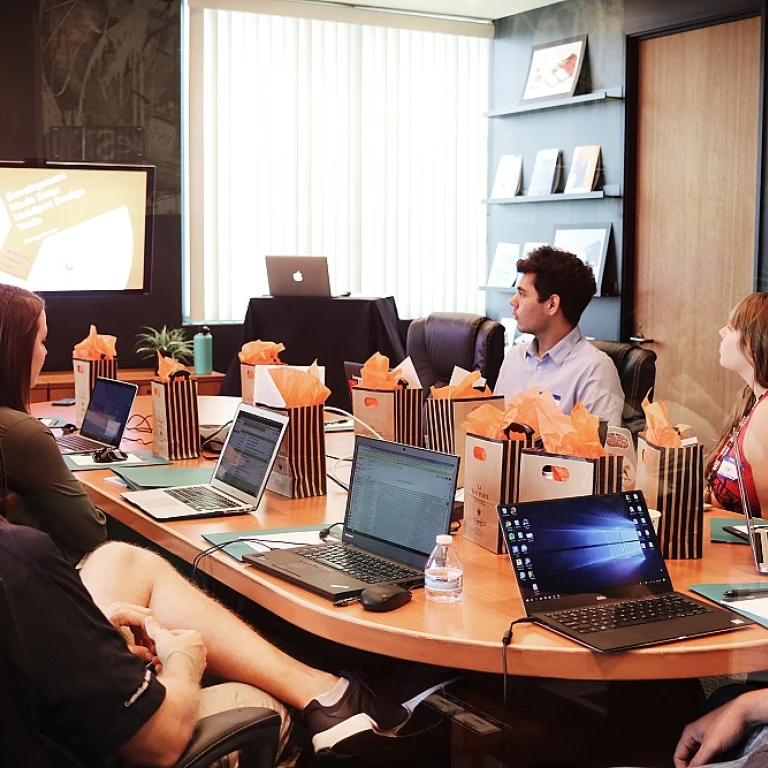
Understanding the Importance of a Ways of Working Template
Why a Working Agreement is Essential for Teams
In today's dynamic work environment, establishing a comprehensive working agreement can significantly enhance team dynamics. This set of documented norms and practices guides team members in their daily interactions and tasks. When effectively utilized, it becomes a cornerstone for healthy team working, facilitating productive collaboration and communication.
Teams function best when there is clarity on roles and responsibilities. An agreement helps pave the way for effective communication by setting expectations around how and when members interact. This aids in structuring meetings, time management, and decision-making processes. Incorporating tools like PowerPoint slides or Google Slides can further support the presentation of these norms in a visually engaging format.
Having a template in place for these agreements ensures consistency across different teams within an organization, enabling smoother collaboration and integration. It's not just about putting something on paper—it’s about creating an environment where each team member feels heard and involved in the process.
In conclusion, understanding the importance of a structured working agreement is the first step toward building a cohesive and effective team. It aligns personal goals with organizational objectives, fostering a work culture where employees feel valued and motivated to contribute to the team's success.
Key Elements of an Effective Template
Crafting a Functional Framework for Team Success
A well-constructed ways of working template serves as a pivotal tool in fostering an efficient and cohesive team environment. The following elements are crucial to ensure the template's effectiveness in practice:
- Clear Objectives: The template must outline the purpose and goals of the team work agreement. Whether it's enhancing communication or streamlining the meeting process, having a clear directive sets the stage for success.
- Defined Roles and Responsibilities: Each team member needs a clear understanding of their role within the project. This guidance ensures everyone is aligned with the team's objectives and aware of their part in achieving them.
- Effective Communication Channels: Outline the primary modes of communication – such as emails, slack channels, or regular updates in Google Slides presentations – to facilitate a smooth flow of information. Clarity in communication prevents misunderstandings and fosters a productive work culture.
- Data Sharing Protocols: Specify how data will be shared and stored to maintain transparency and accessibility. This is particularly significant for teams relying on slides cpb or PPT PowerPoint for project management.
- Decision-Making Guidelines: Establishing how decisions will be made, possibly through consensus or a particular voting process, is fundamental for maintaining a cooperative environment.
- Regular Feedback Mechanism: To preserve the agility and adaptability of the team, integrate a process for regular feedback. This allows the team to refine their working methods and agreements iteratively, ensuring growth and improvement over time.
- Time Management Practices: Implement time allocation and tracking techniques to maximize efficiency. This might include flexible working hours to suit diverse team norms and preferences, optimizing the team dynamics.
For those interested in expanding their team-building strategies, consider exploring engaging activities that can further boost team synergy. Creating a robust ways of working template is just the beginning; maintaining an adaptable and responsive framework is integral to enduring team success.
Customizing Templates for Diverse Teams
Tailoring Templates for Varied Teams
In any business environment, considering the unique characteristics of each team ensures that the working template actively supports productivity and communication. Customizing the template to fit your team's specific needs leads to an effective integration into their work processes. Here are some suggestions on how to tailor your template effectively:- Identify Team Norms: Begin by analyzing the established norms within the team. Recognize the work culture and collaborative methods that are already in place and how they align with broader organizational objectives. This helps in understanding which aspects of the template can be adapted to suit the existing work environment.
- Leverage Flexible Working: In today's world, flexible working arrangements are increasingly common. The template should be adaptable for teams featuring remote or hybrid setups, ensuring seamless communication regardless of physical location. Accommodating various time zones and working hours in the template can enhance team working dynamics.
- Utilize Appropriate Tools: Choose platforms compatible with your template, such as Google Slides for those seeking easy edits or PowerPoint presentations in a more formal setting. Selecting the right ppt or slides cpb tools can optimize the document's effectiveness, helping team members engage with and contribute to the working agreement.
- Incorporate Feedback and Data: Regular reviews and feedback sessions with team members will aid in refining the template over time. Incorporating employees' input can reveal necessary adjustments and contribute to more efficient processes in team meetings.
Implementing the Template in Your Organization
Strategies for Seamlessly Introducing the Template
Incorporating a working template within your organization involves careful planning and strategic execution. To effectively harness its potential, consider adopting several best practices that facilitate a smooth implementation process.- Conduct an Introductory Meeting: Host a meeting to introduce the template to your team members. Explain the purpose and benefits of the template as a working agreement. This initial meeting serves as an avenue for open communication, allowing team members to ask questions and voice any concerns they might have.
- Utilize a Presentation Tool: Leverage popular presentation tools, such as Google Slides or PowerPoint, to create an engaging presentation outlining the template’s key elements. This business presentation can be transformed into a slide deck or a PPT that employees can download and refer to as needed.
- Customize Communication Channels: Choose appropriate communication channels for ongoing discussions about the template. Consider combining verbal meetings with written updates through emails or internal forums. These are effective ways to ensure that new policies and template updates reach all relevant parties in a timely manner.
- Plan for a Flexible Environment: The success of a working template lies in its adaptability. Address the diverse needs across departments, allowing for team-specific customizations. Ensure your team norms and templates are malleable to accommodate varying priorities and work environments, from remote to in-office setups.
- Engage in Continuous Feedback: Foster a culture of open feedback. Encourage employees to share their thoughts about the template, suggesting improvements or highlighting challenges they face. Regular feedback forms part of an iterative process, guiding future modifications to enhance the template's fit.
Overcoming Common Challenges
Addressing Obstacles to Impactful Implementation
Rolling out a new working template in an organization can present several hurdles. While understanding the importance of establishing clear team norms and recognizing the key elements that make a template effective are essential, overcoming these common challenges is crucial to ensuring its success.- Resistance to Change: Many employees are accustomed to existing ways of working and may resist changes. Effective communication is vital to address this, highlighting the benefits of the new template in improving team dynamics and enhancing the work environment.
- Diverse Work Culture: Diverse teams often have varying needs and expectations. Customizing the working template to cater to these differences can be complex but is necessary for effective implementation. Gathering data on specific team working preferences can inform adjustments.
- Flexible Working Arrangements: As businesses increasingly adopt flexible working, including remote and hybrid models, ensuring the template accommodates different working conditions is essential. Consider incorporating elements that support virtual team collaboration using platforms like Google Slides or PowerPoint to maintain cohesive communication.
- Resource Constraints: Time and resources may limit the full potential of a template. Streamlining processes by prioritizing essential steps and utilizing easily accessible tools for seamless integration can mitigate these issues.
- Engagement: Holding a structured meeting with team members to present the template in a compelling ppt or slide ways can help engage employees. Showing data-driven insights on the process's benefits can secure buy-in from team members.
Measuring Success and Iterating on Feedback
Evaluating Success and Gathering Insights
To ensure that your ways of working template is not only implemented effectively but also contributes positively to your work culture, measuring success is crucial. By assessing its impact, teams can identify areas for improvement and enhancement.- Data Collection and Analysis: Start by collecting data from team members. Use surveys or feedback forms to understand how the template affects team norms, communication, and the overall work environment. Gathering both quantitative and qualitative data will provide a holistic view.
- Effectiveness of Communication: Evaluate if the template has improved communication within the team. Are meetings more structured? Has the frequency of miscommunications decreased? Gather insights during team meetings and one-on-one sessions to gauge this.
- Flexibility and Adaptability: Assess if the template accommodates diverse employee needs, such as flexible working arrangements. Team members should feel that the ways of working are adaptable to their preferences, leading to higher engagement.
- Implementation and Feedback Loop: After the initial implementation, hold regular check-ins to review its success. Use this time to iterate on feedback received and make necessary adjustments. Consider hosting a dedicated slide presentation or a ppt ppt slideshow to address any challenges and showcase improvements.
- Continuous Improvement: Creating a thriving business environment requires acknowledging that everything can be improved over time. Consistently updating the template ensures that it remains relevant and effective in a changing business landscape.












